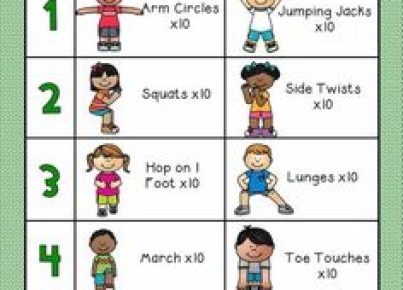Introduction
Physical Education (PE) is an essential part of the school curriculum, promoting physical activity, healthy lifestyles, and overall wellness in children and adolescents. A common debate among educators, parents, and policymakers relates to the duration and frequency of PE lessons throughout the week. The question arises: is two hours of PE a week enough? This article will analyze the effectiveness of two hours of PE per week in relation to students’ health and physical development.
Benefits of PE
Physical activity through PE classes is required for the healthy growth and well-being of children. Some significant benefits include:
1. Improved physical fitness: Regular participation in physical activities enhances cardiovascular endurance, muscular strength, flexibility, and body composition.
2. Mental health: Engaging in physical activities can improve mental health by reducing stress levels and anxiety while boosting self-esteem and cognitive functions.
3. Social skills development: PE classes encourage teamwork, communication, conflict resolution, and cooperation among students.
4. Prevention of chronic illnesses: Regular physical activity helps prevent obesity, type 2 diabetes, heart diseases, and other lifestyle-related issues.
5. Motor skills development: Children engaged in a variety of sports and activities can develop motor skills like coordination, balance, and agility.
Is Two Hours Enough?
The World Health Organization recommends at least 60 minutes of moderate to vigorous-intensity activity daily for children aged 5-17 years. Considering this recommendation alongside a regular five-day school week, children should accumulate approximately 300 minutes or five hours of physical activity within that time frame.
However, it is worth noting that these recommendations also consider place for extracurricular activities like sports clubs or active playing after school with friends at home. Therefore, it is crucial to assess whether two hours of PE in schools suffice to fill the remaining gaps from those extracurricular active minutes for every child.
There have been numerous studies exploring the effectiveness of various PE durations per week. Some researchers argue that two hours of PE instruction is genuinely insufficient and propose that students would benefit from more extended and frequent PE interventions.
For instance, a study found that primary school children who participated in 45 minutes of daily PE showed significant improvements in their motor skills compared to those receiving only two hours weekly. Another research indicated that increasing the duration of PE sessions to three or four hours per week had a more substantial effect on cardiovascular risk factors and overall fitness levels in adolescents.
On the other hand, some believe that quality is more important than quantity, arguing that shorter but highly focused and diversified lessons can still yield desirable outcomes. It is essential to ensure effective teaching models, engaging activities and ensuring the inclusion of diverse sports and activities that cater to different interests. Program effectiveness may trump total duration.
Conclusion
Although two hours of PE per week provides numerous health benefits, it may be inadequate for optimal physical development and health promotion in children and adolescents. To maximize the benefits, a greater emphasis should be placed on enhancing the quality of PE lessons, while discussing strategies to increase the amount of physical activity both within and outside school premises.
Investing in comprehensive school-based physical activity programs, integrating non-traditional activities like yoga or dance, encouraging active transportation to school, and promoting family engagement in physical activities during leisure time can help ensure children get enough opportunity for holistic growth and well-being.





